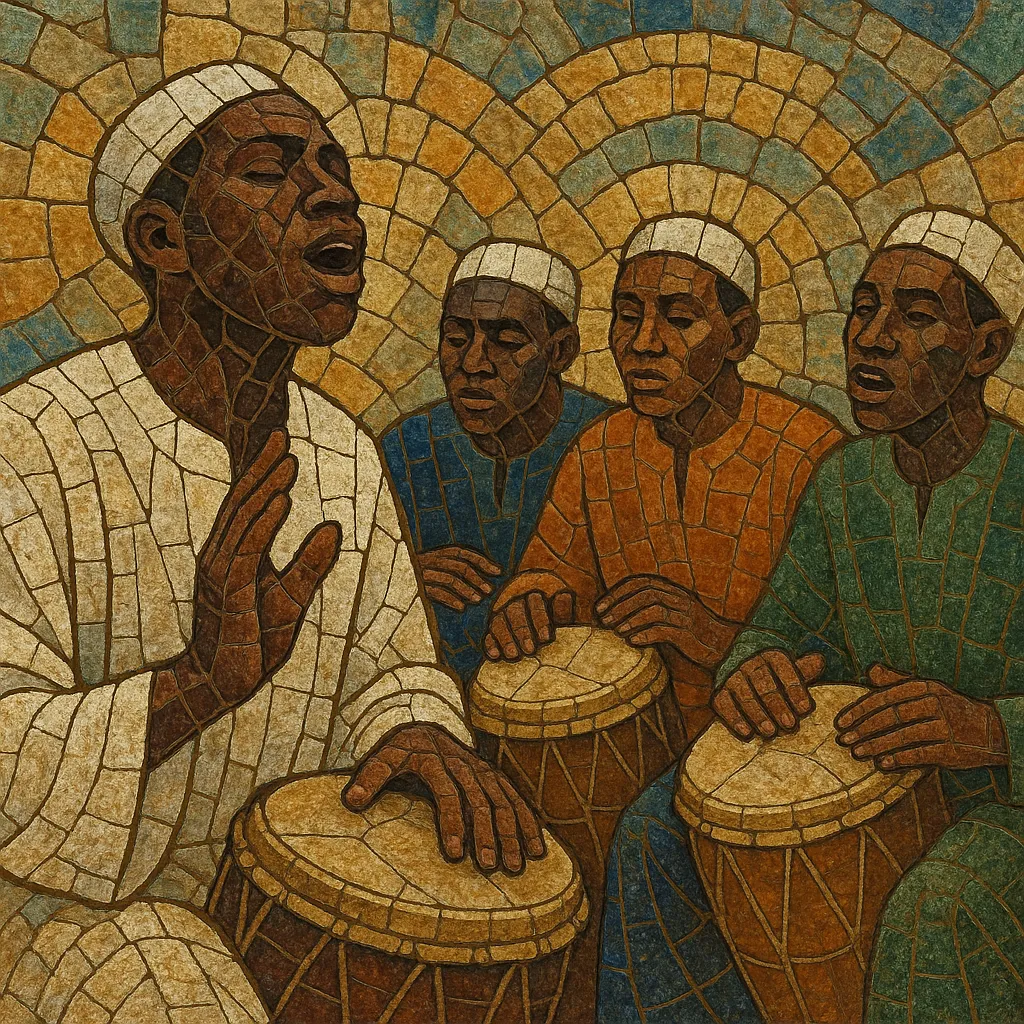Mataali is a Ugandan Muslim devotional percussion-and-voice tradition performed in praise of the Prophet Muhammad and to mark Islamic communal occasions. It is typically rendered by groups attached to mosques or community associations.
Musically, mataali centers on tightly interlocking drum patterns played on small hand-held drums alongside a lead singer and a responsive chorus. Call-and-response vocals, unison refrains, and rhythmic declamation of praise poetry (often in Luganda or other local languages) shape its energetic, participatory character.
The style is public-facing and processional as much as it is liturgical, heard at weddings, Mawlid celebrations, Ramadan gatherings, and community festivals. Its blend of East African drumming sensibilities with Islamic praise-song aesthetics gives it a distinctive, uplifting ceremonial feel.
Islam reached the Buganda kingdom and surrounding regions in the 1800s, bringing devotional song forms and praise-poetry practices that meshed with local musical life. By the early 1900s, mosque-based ensembles in what is today Uganda had developed a recognizable drumming-and-chant tradition that would be known as mataali.
Throughout the mid–20th century, mataali matured as a community ensemble practice. Groups attached to major mosques formed competitive and ceremonial troupes, refining ensemble drumming, responsorial vocals, and praise-poem repertories in Luganda and other local languages. Performances marked Islamic holidays, weddings, and civic occasions, helping standardize repertoire and ensemble roles.
In contemporary Uganda, mataali remains a prominent cultural expression within Muslim communities. Ensembles perform at Mawlid and Ramadan events, local festivals, and interfaith cultural showcases. While largely acoustic and tradition-focused, some groups have adapted formats for staged concerts and media, documenting repertoire and sustaining intergenerational transmission through mosque youth groups and women’s ensembles.


